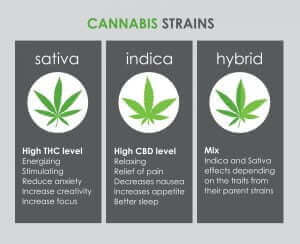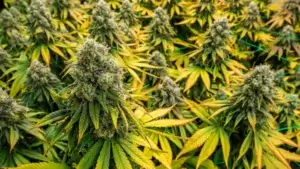Afghanistan, famous for opium, is also the world’s leading producer of cannabis resin (hashish), producing approximately 3,400 tons in 2018 alone — valued at over $1.4 billion.
If you’re asking, ‘Is cannabis legal in Afghanistan?‘ the answer is no. Cannabis has been illegal in Afghanistan for a long time. The Taliban’s return to power in 2021 has added to the legal confusion, prompting questions about enforcement and the future of cannabis in a country where it has cultural roots run deep.
According to a 2018 UNODC report, Afghanistan produced approximately 3,400 tons of cannabis resin, valued at around $1.4 billion.
Legal Status of Cannabis in Afghanistan (2025)
1. Recreational Use
Recreational use of cannabis is illegal in Afghanistan. The 2005 Counter Narcotics Drug Law criminalizes possession, sale, and consumption and, if convicted, subjects violators to fines or imprisonment. Even small quantities (less than 10 grams) can get you three months in jail.
An arrest for hashish is one of the country’s most common drug offenses, but its use persists, especially in social settings such as the traditional chillum bars.
2. Medicinal Use
There is no legislation for medical cannabis in Afghanistan. And though historical texts and advocates discuss its use in traditional medicine, modern legislation makes no allowances for therapeutic use. The Taliban’s new decree in 2023 extended existing bans on cultivation and put an end to discussions on medical legalization.
3. Industrial Use
Industrial hemp is illegal. Cannabis fibers and seeds have long been used in textiles and food, but no distinction is made between industrial hemp and psychoactive varieties in today’s laws.
Planting even the most innocuously named cannabis is met by draconian penalties for farmers; unambiguous jail sentences, including life sentences.
Cannabis Usage and Its Impact in Afghanistan
Afghanistan remains a leading producer of hashish, highlighting the ongoing challenges of regulating the plant. Below is a breakdown of the societal and economic impacts of weed in Afghanistan:
1. Recreational Drug Use
Hashish smoking is commonplace in Afghan culture, especially among older men. Such parties often feature resin pipe (chillums) smoking and a melon to help it work better.
The strict U.S.-backed bans of 1973 put an end to the “Hippie Trail” era, wherein hordes of Western tourists came for Afghan hash.
2. Mental Health Issues
While no one has conducted an official study into it, drug abuse is handled separately. Those found to be dependent on drugs are supposed to attend court-ordered rehabilitation, expressing government views attempting to make cannabis appear as a stumbling block for society.
3. Economic Dependence
For these rural economies, cannabis could work as their lifeline. In provinces like Balkh and Kandahar, cannabis survives on illicit cultivation, in amounts between 10,000 and 24,000 hectares of land harvested yearly. The Taliban would still benefit from the business, despite having imposed a ban on cultivation in 2023, with it saying that it once financed 60% of its operations.
Cannabis Cultivation in Afghanistan
Afghanistan’s mountainous regions and arid climate make it ideal for growing potent Cannabis indica strains. The country is a biodiversity hotspot, with landrace varieties like Hindu Kush and Mazar-i-Sharif prized for their resin-rich buds.
However, cultivation is risky:
- Legal Risks: Farmers face 10–20 years in prison for small plots and life sentences for large operations.
- Taliban Enforcement: The 2023 ban mandates crop destruction and Sharia-based punishments (e.g., amputations).
Paradoxically, the Taliban partnered with German firm Cpharm in 2021 to build a medical cannabis facility—a plan later denied by the company.
Law and Control of Cannabis in Afghanistan
1. Enforcement of Cannabis Laws
Law enforcement is patchy. Some areas, such as Kabul, have government intervention; others allow for de facto tolerance based on some economic exploitation.
Extreme penalties are exacted for trafficking under strict Taliban interpretation of Sharia law, including public execution.
2. The Illegal Weed Market
The black market in Afghanistan flourishes, providing 18% of the world’s seizures of hashish. Based on quality and risk, the price varies between $50 and $100 for 50 grams of hashish, with premium resin commanding noticeably higher prices.
Smuggling organizations work through porous borders to get money through a forward supply of goods into Europe and Asia.
Cannabis Penalties in Afghanistan
| Offense | Penalty |
| Personal Use | 3 months–5 years imprisonment; fines up to €116. |
| Trafficking | 10–20 years imprisonment; life sentences for large-scale operations . |
| Cultivation | 10–20 years imprisonment; life sentences for large-scale operations. |
Future of Cannabis Legalization in Afghanistan
It is unlikely that the Taliban, with its strict interpretation of Sharia law, would legalize anything. However, desperation may force them into clandestine deals such as the much-debated Cpharm partnership.
Local reliance on cannabis farming may conflict with international pressure to end the trade in drugs. Afghanistan will remain a contradiction: a world hashish center in a permanent status of prohibition and survival.
Afghanistan’s relationship with cannabis is thus a fusion of history, conflict, and contradiction. Behind this cacophony of crude laws, cultural acceptance, and economic necessity guarantee the plant will not disappear so soon.
Travelers and investors alike are advised against traveling there—Australian hashish may have a legend, but those who do always pay the price.
Statistics sourced from UNODC reports, governmental decrees, and historical cultivation data.





